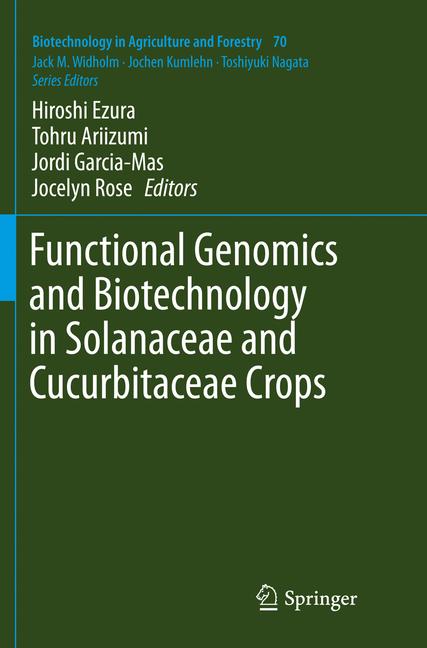This volume summarizes recent technological advances in the design and engineering of Solanaceae and Cucurbitaceae crops. It begins with contributions on the tomato and melon genome sequence, databases for Solanaceae and Cucurbitaceae research, DNA markers in the breeding of the two families, and mutant resources and TILLING platforms in tomato research. Subsequent chapters address the use of molecular techniques for the modification of important breeding traits, such as tomato fruit set, growth, ripening, and sugar accumulation, as well as disease and insect resistance in melons. The volume closes with chapters on genome editing using artificial nucleases as a future breeding tool, and on the development of an in silico crop design system. It offers a valuable resource for plant breeders, molecular biologists, and agronomists.
Tomato genome sequence.- Melon genome sequence.- Databases for Solanaceae and Cucurbitaceae research.- DNA markers in Solanaceae breeding.- DNA markers in Cucurbitaceae breeding.- Mutant resources and TILLING platforms in tomato research.- Tomato fruit set and its modification using molecular breeding techniques.- Fruit growth in tomato and its modification by molecular breeding techniques.- Sugar accumulation in tomato fruit and its modification using molecular breeding techniques.- Fruit ripening in tomato and its modification by molecular breeding techniques.- Disease resistance in melon and its modification by molecular breeding techniques.- Insect resistance in melon and its modification by molecular breeding.- Genetic engineering of important breeding traits in Solanaceae and Cucurbitaceae.- Genome editing technologies and their use in tomato.- Toward in-silico design and engineering of Solanaceae and Cucurbitaceae crops.
This volume summarizes recent technological advances in the design and engineering of Solanaceae and Cucurbitaceae crops. It begins with contributions on the tomato and melon genome sequence, databases for Solanaceae and Cucurbitaceae research, DNA markers in the breeding of the two families, and mutant resources and TILLING platforms in tomato research. Subsequent chapters address the use of molecular techniques for the modification of important breeding traits, such as tomato fruit set, growth, ripening, and sugar accumulation, as well as disease and insect resistance in melons. The volume closes with chapters on genome editing using artificial nucleases as a future breeding tool, and on the development of an in silico crop design system. It offers a valuable resource for plant breeders, molecular biologists, and agronomists.
Provides both basic and detailed technical information on Solanaceae and Cucurbitaceae research and breeding
Intended to help improve global food security
Supplemented with rich illustrations throughout



